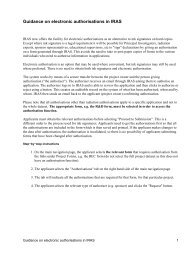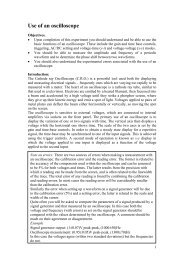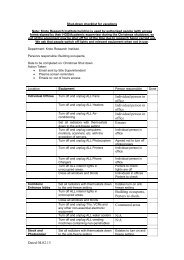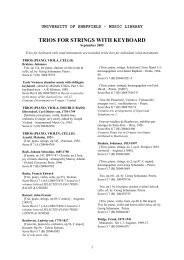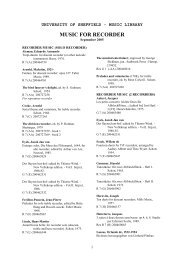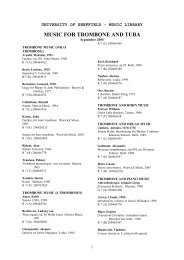Huron & SNAP Documentation
Huron & SNAP Documentation
Huron & SNAP Documentation
Create successful ePaper yourself
Turn your PDF publications into a flip-book with our unique Google optimized e-Paper software.
Starting<br />
↓ To access the WavePlayer<br />
Configuring Voices<br />
↓ To adjust the number of voices<br />
played by the WavePlayer<br />
Loading, Playing, Stopping and Controlling WavePlayer<br />
wavtosim [-s] [-l] [-S] [-E]<br />
<br />
specify s if the wave file already uses the *.SIM<br />
file format. l specifies the addition of a loop to<br />
the sample, and S and E specify the start and<br />
end samples to be converted.<br />
OTHER SIMULATION TOOLS<br />
The WavePlayer must be loaded into the VRack through the<br />
New/Simulation Tools submenu. (for loading instructions see<br />
the System Tools section of this manual). Once loaded, the<br />
WavePlayer panel will appear in the VRack, and its associated<br />
patchset will appear in the Patch Bay tool.<br />
• Click on the WavePlayer panel in the VRack.<br />
The WavePlayer configuration window will appear (see Figure<br />
50).<br />
The WavePlayer supports the simultaneous playback of<br />
multiple wave files or “voices”. Each DSP in the <strong>Huron</strong> system<br />
can play back up to eight simultaneous voices, with the<br />
WavePlayer being able to control a total of up to two million<br />
samples of wave data.<br />
• Select the number of voices required from the drop down<br />
voices list.<br />
The WavePlayer will reserve the necessary DSP space required<br />
for playback and provide patchpoints for each voice in the Patch<br />
Bay.<br />
It is not possible to directly load wavetable samples into the<br />
WavePlayer via its VRack interface. Files must be loaded and<br />
subsequently triggered via <strong>SNAP</strong> or Locator commands. All<br />
wave files must be in a 24bit binary *.SIM format, and must<br />
have an even number of samples.<br />
Standard wavefiles may be converted to the *.SIM format by<br />
using the wavtosim program contained in the<br />
c:\<strong>Huron</strong>32\bin directory.<br />
The two most common methods for loading and triggering<br />
wave files in the WavePlayer are using a Locator script, or by<br />
issuing TCP/IP command packets via <strong>SNAP</strong> and the Socket<br />
application. The commands to perform these functions are<br />
described in the <strong>SNAP</strong> and Command Reference subsection at<br />
the end of this section.<br />
HURON TECHNICAL MANUAL PAGE 148





